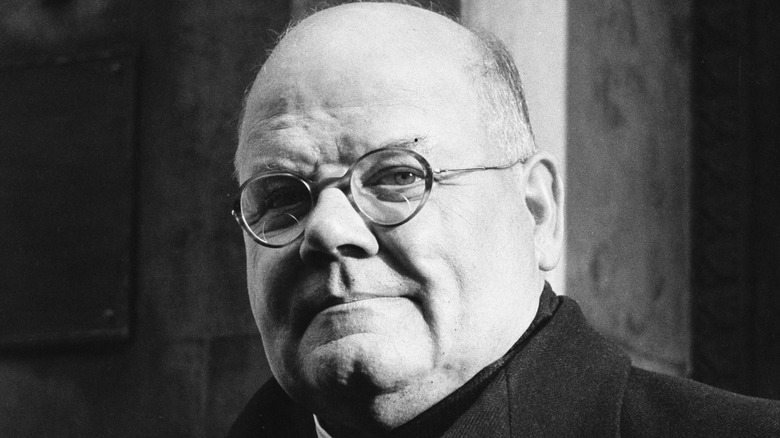A Suspected Serial Killer Doctor Prompted What Was Called The 'Murder Trial Of The Century'
Dr. John Bodkin Adams sat in a cell reserved for capital cases at London's Old Bailey, England's Central Criminal Court, waiting to hear whether he would be hanged for the murder of an 81-year-old patient, Edith Morrell, one of two victims police had charged him with killing. He was a nondescript-looking general practitioner, middle-aged, balding, and bespectacled. "I didn't let it get me down," he would later write in The Province. "In fact, I read a book. But even for an innocent man, these were terrible moments."
Bodkin had just sat through 17 days of trial, the longest in English criminal history at the time, and now he waited for the jurors to determine his fate, per "Medical Murder: Disturbing Cases of Doctors Who Kill." The trial had been full of surprises and had the world tuning in and hanging on every media account of the proceedings. Forty-four minutes after the jury left the courtroom to deliberate on the case, they were back with a verdict.
A leading citizen who always had a smile on his face
John Bodkin Adams was born in 1899 in Randalstown, County Antrim, Ireland, the son of a preacher. After attending Queen's University in Belfast, he moved to Sussex County, England, and set up his medical practice, per the BBC. Over the course of more than 30 years, he settled into his life as the leading physician of the seaside town of Eastbourne, became president of the local Y.M.C.A., led Sunday school classes, and had many leading citizens as patients, including Eastbourne's head constable. He also had many elderly widows as patients, some of whom included him in their wills, according to the Newspaper Enterprise Association (NEA). He owned a Rolls Royce and had become a very wealthy man.
His patients called him the smiling doctor, as he always seemed to have a permanent grin. In November 1950, Edith Morrell died of a stroke (or at least that's what Adams contended) while under his care and he ordered her body to be cremated, per the NEA. It wasn't until another of his patients, Gertrude Hullett, died under mysterious circumstances in 1956 that the police began looking into the doctor. Besides charging him with the two murders, Scotland Yard began investigating at least 14 other cases, per the NEA. The number kept growing, and it's believed he may have killed hundreds, according to Sussex Live.
Serial killer, an angel of mercy, or an innocent man?
What many U.K. newspapers of the time called the "trial of the Century" began on March 18, 1957, and it was a sensation, with Adams' attorney, Geoffrey Lawrence, giving a masterful performance full of wit and sarcasm, per The Boston Globe and The Province. Among the highlights were battling medical experts and the destruction of the prosecution's case with the introduction of surprise evidence by the defense that directly contradicted the testimony of several nurses who alleged Adams had been giving the victim massive doses of heroin and morphine, per "Medical Murder: Disturbing Cases of Doctors Who Kill." In another twist, Adams didn't take the stand in his own defense, something that was unheard of at the time. After the long trial, the jury deliberations seemed shockingly fast. The jury found Adams not guilty. Afterward, the prosecution dropped the second murder case against him, per The Boston Globe. He was a free man.
Was Adams the precursor to the British serial killer Dr. Harold Shipman, dubbed Doctor Death by the press, who is believed to have killed more than 200 of his patients? Or was he something more akin to Jack Kevorkian, the proponent for euthanasia, whom the press also called Dr. Death? Or was he simply the smiling doctor whose elderly patients adored him enough to put him in their wills? We may never know the true answer. Adams was never convicted of murder and he died in 1983, a wealthy man who took the answers to his grave.


